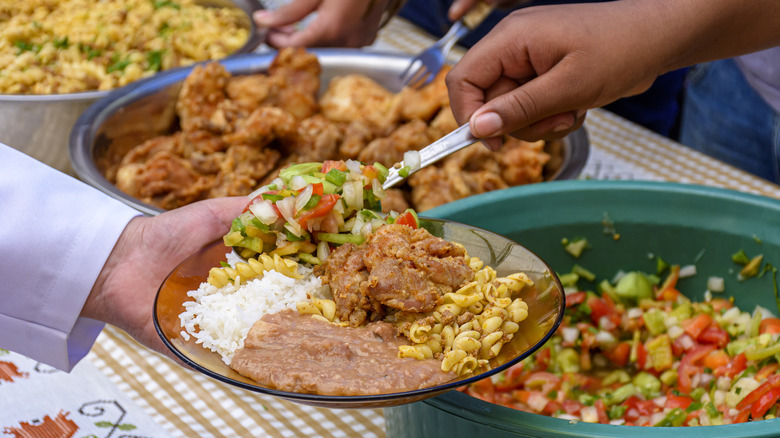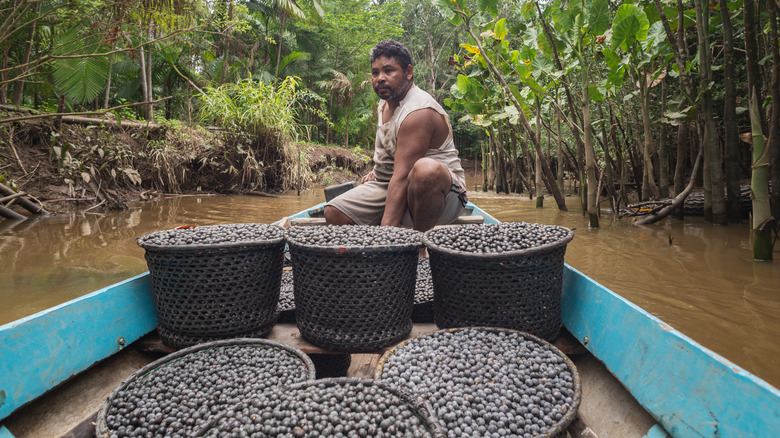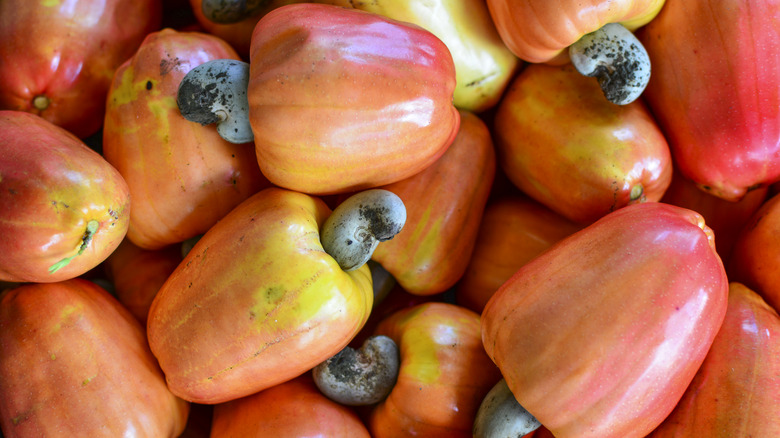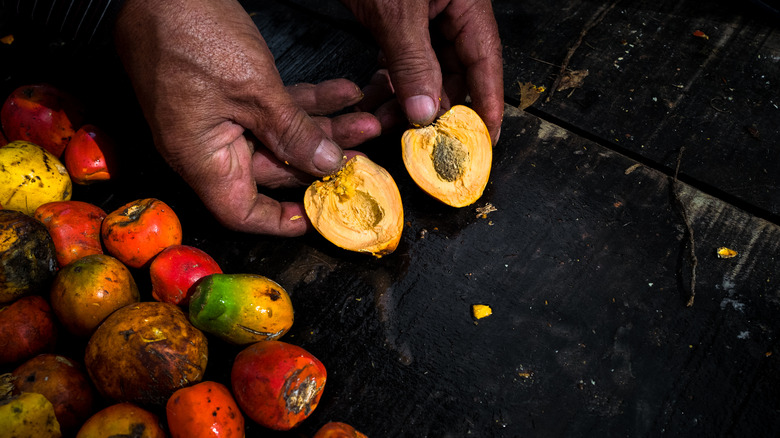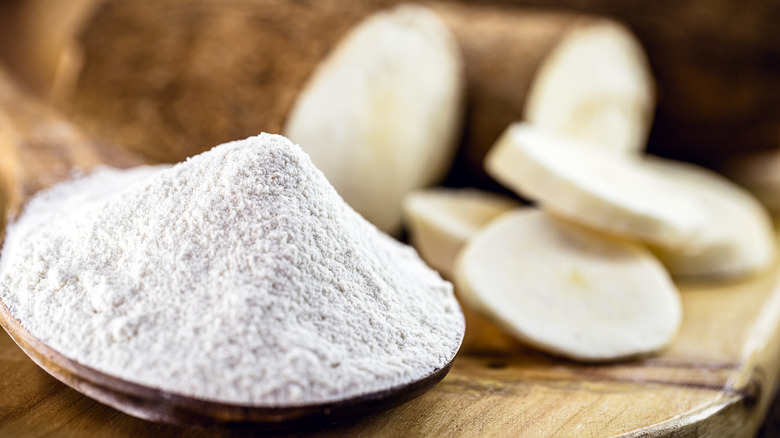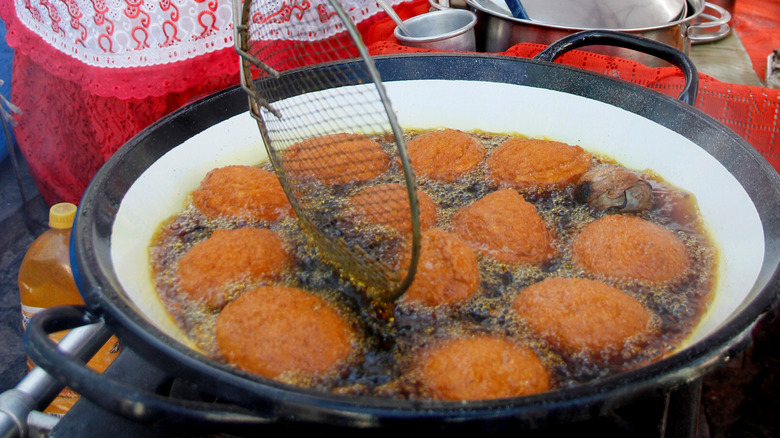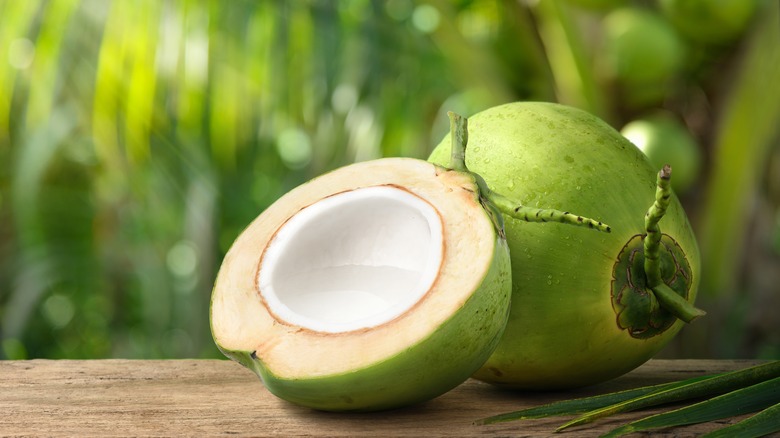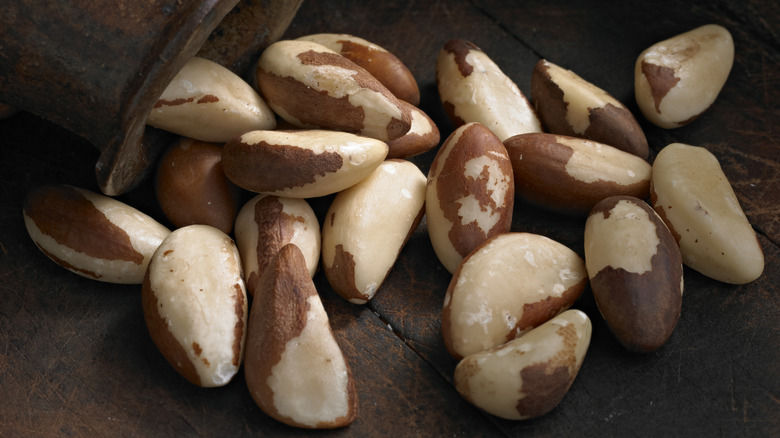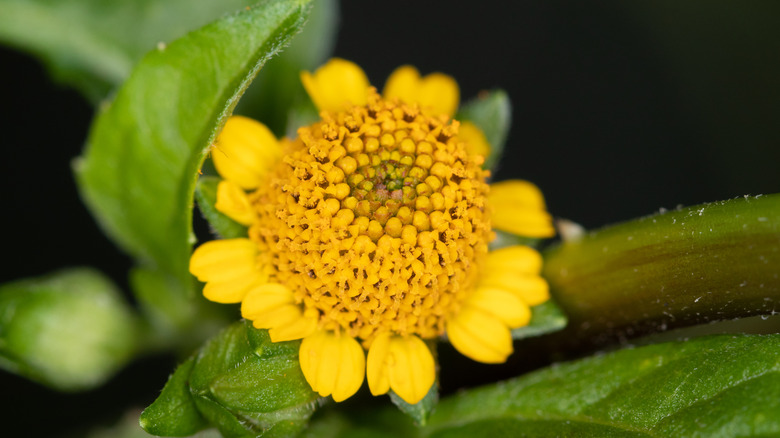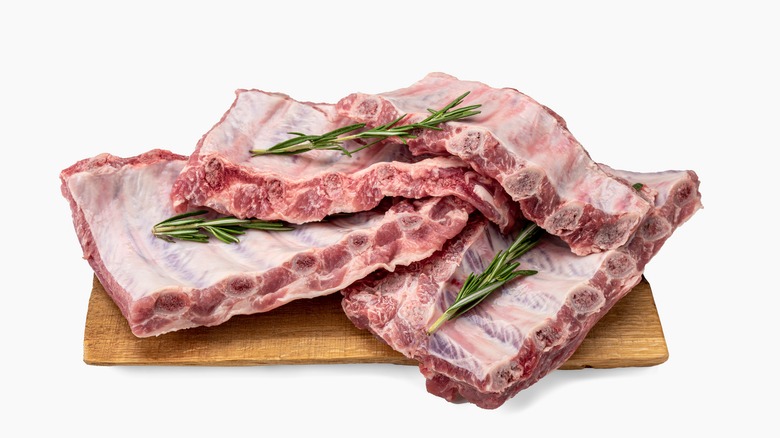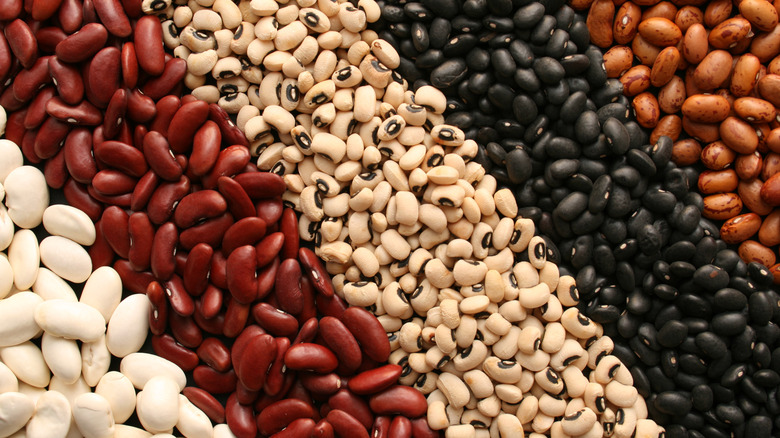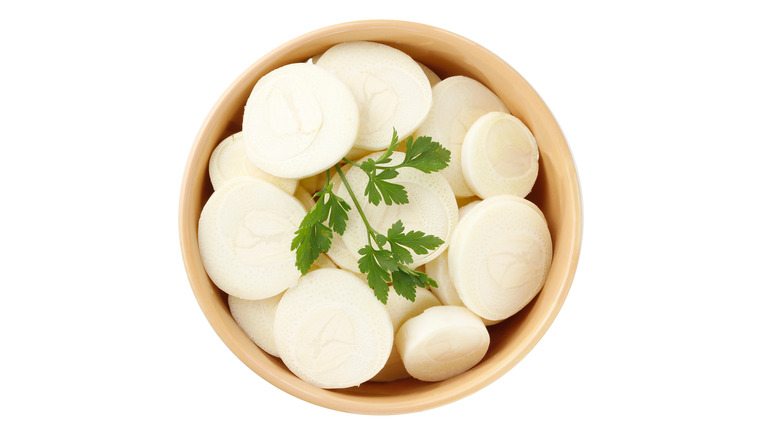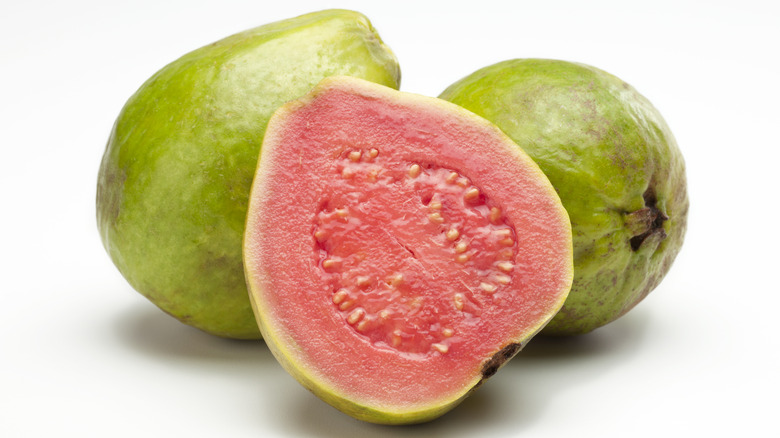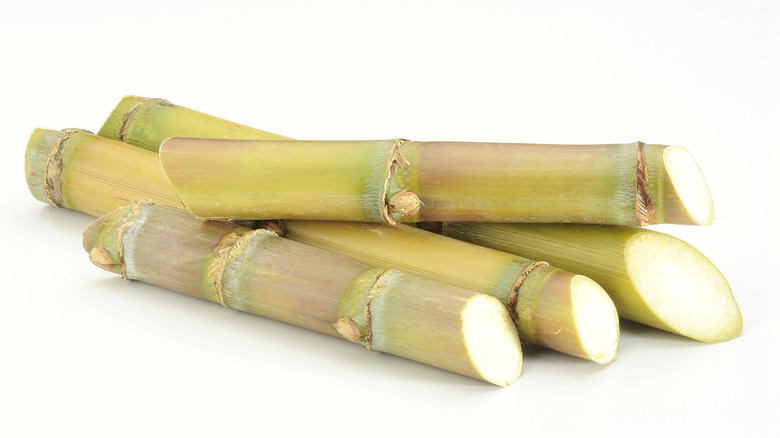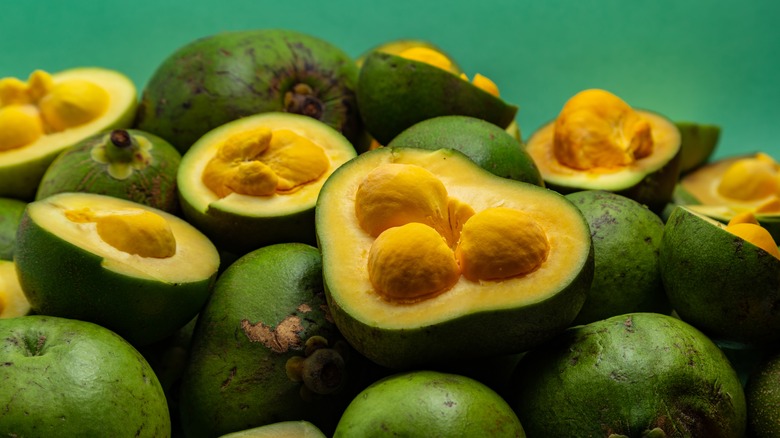14 Essential Ingredients For Brazilian Cooking
Picture yourself in Brazil. What comes to mind? Tropical white sand beaches, dense rainforest, grassy plains? From the Amazon in the north to the Pampa in the south, these are just some of the many distinct natural wonders that Brazil has to offer, and each one contributes a different cuisine to this continent-sized country.
And Brazil is as culturally diverse as it is naturally diverse. Inhabited by indigenous peoples for thousands of years, colonized by the Portuguese in the 16th century, and heavily influenced by the trans-Atlantic slave trade that brought a massive African population, Brazil contains many cultures. Needless to say, Brazilian cuisine is a difficult term to define because it encompasses such a wide array of elements.
But any cuisine is only as good as the ingredients that you use to make it, and the ingredients that go into Brazilian cuisine are as diverse and varied as the natural and cultural components that make it up. Read on to learn more about the ingredients that make Brazil a culinary wonderland.
Açaí
Açaí may have gained culinary traction in the United States in the last couple of decades, but people in Brazil's Amazon region have been eating these little berries for a long time. This deep purple fruit is a little bitter, so it is often blended up with sweetener and served in a bowl or smoothie and topped with bananas and granola. In Rio de Janeiro, açaí bowls are served ice cold from kiosks on just about every beachfront boardwalk in the city and are a quintessential beach snack.
In the Amazon, where most of the world's açaí comes from, however, it is traditionally served alongside savory local delicacies like fried shrimp and fish, and it is prepared hot and salty. It's not easy to harvest these little purple morsels, which grow near the tops of tall palm trees that grow about 82 feet tall, notes Brittanica. But the payoff is not only delicious, it's nutritious. Açaí is loaded with compounds called anthocyanins, compounds that give the fruit its rich, dark purple hue and act as antioxidants that can prevent cell damage in the body.
Cashews
If you're like most people in the Northern Hemisphere, you're probably used to eating cashews roasted, salted, and maybe mixed in with some other nuts and fruit as part of trail mix. Although that's certainly a delightful way to enjoy these buttery, slightly sweet nuts, there's so much more to cashews, including an entire fruit that each cashew comes from. And it's worth noting that cashews aren't technically nuts, despite the fact that they're often labeled as such. They're classified as drupe seeds, the reproductive parts of plants known as drupes.
Cashew fruits, the fleshy part of the plant attached to the seed, are sweet and tangy and taste a bit like a blend of other tropical fruits like mango and pineapple with a distinctive citrusy, slightly sour finish. The cashew, or "cajú" as it's called in Portuguese, is native to northern and northeastern Brazil, where cashew culture runs deep and the plants form a significant part of the regional economy. Cashew fruits are used to prepare traditional desserts like cajuzinho, a sweet marmalade rolled in sugar and topped with toasted cashew nuts, and they're also used to flavor drinks like the cashew caipirinha, Brazil's national cocktail that is served throughout the country.
Pupunha
If you've never been to Brazil, chances are you've never heard of pupunha. Grown on tall trees known as pupunheiras or peach palms, these small orange fruits were a staple part of the diet in northern Brazil's Amazon region for thousands of years before the arrival of the Portuguese colonizers. Pupunhas are stone fruits and they're packed with fiber, protein, starch, and minerals like copper, manganese, and zinc.
In Pará, the state in northern Brazil where most pupunha is cultivated, the fruit is often steamed or boiled until the flesh is tender (it can't be eaten raw due to the presence of oxalic acid) and then peeled and served with coffee during breakfast. Although many people like the taste of pupunha alone, it is sometimes topped with sugar or honey to give it a bit of sweetness. Pupunha has a creamy texture and a slightly sweet, nutty taste with a distinct earthiness that makes this fruit easy to incorporate into savory dishes. Although this unique fruit hasn't made much of a splash outside of northern Brazil, pupunha is an integral part of the culture of the Amazon and a must-try fruit if you find yourself there.
Tapioca flour
You may be used to eating tapioca in pudding and bubble tea, but did you know that this versatile, starchy plant originated in South America? Tapioca flour comes from the root of the cassava plant (also known as manioc or yuca), which was domesticated thousands of years ago in Brazil's Amazon region. It is made by a process of washing and pulping to extract the starch from the cassava root and it is used in all sorts of Brazilian cooking.
There are street stalls in most Brazilian cities that sell tapiocas, which is a starchy take on the crepe, with a tapioca flour pancake stuffed with all sorts of fillings like ham and cheese or banana and Nutella. Tapioca flour is gluten-free, so it's a great substitute for wheat flour for those who are gluten intolerant. It has a distinctive stretchy, gooey texture that is perfect for making baked goods. Because of its high starch content, tapioca flour also makes a great thickening agent for sauces and stews.
Dendê oil
Northeastern Brazil is known as a melting pot of cultures. Indigenous, African, and European cultures converged to create a unique food scene that features ingredients that originated from around the world. Although red palm oil, also known as dendê oil, originated in Africa, it is widely used in the cuisine of Bahia, a state in Brazil's northeast region. It has a nutty, slightly peppery flavor and can contribute a robust flavor to savory dishes. And it's not just important for its flavor: dendê is also used as an element of worship in some African-based religions that are practiced in Brazil.
Dendê oil is featured in traditional delicacies like vatapá, a type of shrimp stew made with bread, nuts, chile peppers, and, of course, dendê oil. Because of its high smoke point, it's great for frying. Acarajé, a Brazilian dish you need to try at least once, is one of the most famous foods from Bahia, is a bean fritter that is fried in dendê oil and stuffed with savory fillings, most often shrimp. Dendê oil is made by extracting oil from a palm nut that is commonly found in northeast Brazil and although palm oil is rooted in controversy because of cultivation practices mostly in Southeast Asia, it can be cultivated sustainably, which is good news for Brazilian food lovers.
Coconut
Although coconuts are native to Southeast Asia, the coconut palm thrives in tropical latitudes around the world, including in Brazil, where it is a critical ingredient for several regional, delicious, unique Brazilian dishes. Perhaps the most famous Brazilian dish starring coconut (though it's debatable) is moqueca, a spicy seafood curry made with white fish, lime, cilantro, red peppers, and coconut milk that is common in Brazil's culturally vibrant northeast.
Coconuts are also often used in sweets like cocada, which features grated coconut mixed with sugar and condensed milk, a sweet rich combination that is common throughout the country. And a day at the beach in Brazil wouldn't be complete without a fresh coconut, which are typically sold from kiosks on most Brazilian beaches, where the top is chopped off and you can drink the coconut water straight from the fruit, creating a deeply refreshing tropical experience you won't soon forget.
Brazil nuts
Maybe you could've guessed it, but Brazil nuts are, in fact, from Brazil. They are not, however, nuts. Technically, these oily, earthy, oblong little treats are actually seeds that come from a tree that is native to Brazil's Amazon River basin. In Brazil, these nuts are known as "castanhas do Pará" meaning "Pará nuts" after the northern Brazilian state of Pará where they're commonly found. Unlike most foods that are cultivated on plantations, ranches, or some kind of organized agricultural system optimized for output, Brazil nuts are almost exclusively gathered from the wild and add millions of dollars to the Brazilian economy each year.
Brazil nuts have been exported for hundreds of years, but only in the last couple of decades have they gained fame for a great source of essential minerals, most notably selenium, which they contain in a greater quantity than any other nut. Although selenium is an important mineral that can help boost your immune system and regulate your thyroid gland, the maximum amount of Brazil nuts you can safely eat in a day is about five, because selenium can be harmful if you eat too much of it. That said, Brazil nuts add a unique earthy flavor to cakes, cookies, and other sweets, which is how they're most often incorporated as an ingredient in Brazilian cooking.
Jambú
Unless you've spent time in Brazil, you probably haven't heard of jambú. This leafy little herb produces distinct yellow flowers and is known as a toothache plant in English because of its numbing properties. If you chew on some jambú, you'll immediately feel a tingling in your mouth and a cooling sensation that may be unlike anything you've ever tasted before. In the Brazilian Amazon where jambú grows in the wild, the flowers are used to flavor tacacá, one of the most famous Amazonian dishes, which is a soup made with shrimp, tapioca starch, and hot peppers. The numbing, tingling effect of jambú counteracts the spicy peppers, making the dish a true adventure of the senses.
Jambú also has several medicinal properties. Because of its numbing effect, it can be used as a local anesthetic, often to ease pain in the mouth from toothaches or stomatitis, a painful condition that inflames the mouth. It can also be used on the skin for its anti-inflammatory properties and stimulates saliva production, which can relieve cases of dry mouth.
Spare ribs
Brazilians from the southern state of Rio Grande do Sul are known as gaúchos, and they have a distinct culture with roots in farming and ranching. This South American cowboy culture gave rise to unique music, clothing, and cuisine, one of Southern Brazil's most famous exports. Churrasco, the Brazilian-style barbecue that originated in the region, can now be found in cities around the world, where they traditionally serve meat on skewers. And one of the meats most commonly found at a true churrasco is pork spare ribs, or costela as it's known in Brazil. Spare ribs are a type of rib found along the belly of the animal as opposed to baby back ribs, which are connected to the backbone.
While barbecue spare ribs in the U.S. are usually smothered in a tangy sauce, churrasco-style pork spare ribs are usually cooked over charcoal and seasoned with coarse salt. Sometimes, churrasco spare ribs are served with a chimichurri sauce, a super flavorful topping made with lemon juice, aromatics, fresh herbs, and sometimes spicy peppers.
Beans
If you go to dinner in any Brazilian home, chances are beans will be on the menu. Brazil covers a massive, continent-sized territory and the different regions have distinct cuisines, but beans are the common denominator that is present in virtually every corner of the country. While the most popular type of bean in Brazil is the black bean, pinto beans are common in São Paulo, and black-eyed peas are all over Brazil's northeast.
Beans are inexpensive to produce, which explains why they're so popular in Brazil. One of the most common cheap meals is the deliciously simple "prato feito," which consists of rice, beans, and meat. One of Brazil's most famous dishes, feijoada, is a bean stew typically made on weekends that includes tons of meat like sausage, bacon, dried meat, and sometimes pig feet. And for being cheap, beans are super nutritious. They're packed with protein and fiber, as well as important nutrients like folate, potassium, and phosphorus.
Heart of palm
It's easy to picture a palm tree swaying in the breeze when you think of Brazil. Perhaps less obvious is that within many palm trees is a soft, tubular core that is a common ingredient in Brazilian cuisine. Heart of palm, or "palmito" as it's known in Brazil, is typically canned or jarred and used in a variety of snacks and side dishes in Brazil. Eaten for thousands of years by indigenous peoples in Central and South America, they are tender, crisp, and have a unique briny flavor profile that adds a delicious, fresh bite to a salad. Palmito is also often chopped up, and mixed with cheese served inside pastels, which are fried dough pockets that are a common snack served at street stalls throughout Brazil.
Palmito also packs a big flavor punch for an ingredient that is low in carbs and calories and high in nutrients. That said, not everything about palmito is perfect. Heart of palm is controversial because in many cases, the entire palm tree needs to be cut down to harvest the tender core for consumption, and over-harvesting of the juçara palm, which grows in Central America, has almost led to its extinction.
Guava
The guava has a global presence. Although the guava tree originated in Central and South America, most of the world's guava comes from India. A feast for the senses, these delicate little fruits come in different colors. Some are yellow and pale and others are green on the outside and have vibrant pink flesh on the inside, but the taste is always tangy, vibrant, and tropical. The guava has been a staple of Brazilian cuisine for hundreds of years.
In the 16th century, when Brazil was in the early days of colonization by the Portuguese, guava was used as a substitute for quince to make a thick paste that was often eaten with cheese. In fact, a dish called "Romeo and Juliet," which is layers of guava paste and mild white cheese layered and served in little stacks, is still served as a snack or dessert in many Brazilian households. Goiabada, as this viscous marmalade is known, is still wildly popular throughout Brazil and can be found in most grocery stores and roadside farm stands. Guava's unique taste also makes it a great addition to cakes and other sweets.
Sugar cane
Brazil has a long, complicated entanglement with sugar cane. The crop was brought to Brazil in the 16th century from its native habitat in Southeast Asia and Brazil quickly became the world's largest producer of sugar, feeding Europe's ever-growing demand for the sweet substance. This led to the creation of massive plantations, mostly in northeastern Brazil, that used slave labor to turn massive profits. These days, Brazil still grows more sugar cane than anywhere else in the world and it is deeply infused with the Brazilian culture and diet.
Sugar cane juice, known in Portuguese as "caldo de cana," is served up at street stalls all over the country and Brazil is famous for its sugary treats. Perhaps the most famous product made from Brazilian sugar is cachaça, which is made from fermented sugar cane juice. Brazil's national drink, the caipirinha, is made from cachaça, muddled limes, and, of course, sugar, and no trip to the beach in Rio is complete without one of these ice-cold tropical libations in your hand.
Pequi
Home to some of the most diverse biomes in the world, Brazil has an abundance of fruits, some of which are practically unknown to others beyond the country's borders. Pequi is one of those fruits. Native to the Brazilian highlands in the country's Central-West region, the pequi fruit is really not for the faint of heart. If eaten with abandon, pequi can damage the gums, tongue, and palate of the eater due to the presence of spikes inside the fruit — yes, inside the fruit.
And pequi isn't only contentious because of the danger is poses to hungry consumers. It has a unique flavor that is sometimes described as musty, cheesy, or, in one episode of the famous Anthony Bourdain show "Parts Unknown" as "teasting sweaty, or like a barnyard." Despite being a divisive fruit, pequi is adored by many, especially in the Brazilian state of Goiás where most pequi is cultivated.
